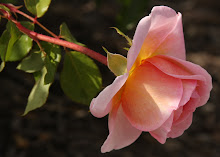Boswellia sacra tree from which frankincense is extracted.
Photo courtesy of Wikipedia 2011
…and when they had opened their treasures,
They presented unto Him gifts: gold, frankincense…
Matthew 2:11
I love things that smell pretty. I like to smell incense burning, but don’t like to actually burn the stuff – slow, messy, etc. I love scented candles – as long as the scent is pleasing (which many are not) and the candle wax does not get in the way of the wick burning! When we opened presents on Christmas Eve, I was thrilled to find two wonderful candles that my daughters had purchased in Massachusetts during our Thanksgiving holiday. One is called Winter Cabin and is the most amazing spicy scent mixed with fresh Christmas tree and a hint of wood-burning fires (trust me, it really does smell like that). The other is `Tis the Season, with apples, cinnamon, and fresh pine. The vegetable wax liquefies as it burns, then reforms to a no mess, no fuss 3-wick candle. Delightful!
Frankincense is a highly scented resin obtained from the bark of the Boswellia sacra tree. The resin is used in perfumes and incense. The tree is capable of growing literally anywhere – sometimes growing directly out of solid rock. One of the early depictions of frankincense trading is found in a mural that adorns the walls of the temple of Egyptian Queen Hatshepsut, who died in 1458BC. Although mostly burned, frankincense is also edible, and has been used in medicinal preparation, particularly in the medical practices of India.
As with so many other things in our world today, the trees that produce frankincense resin are endangered due to over-exploitation. In biblical times, however, they were abundant and the substance could be obtained if one had the funds to pay the price. The magi from the east would have had ready access to frankincense, and added a container of the dried resin as one of the gifts they brought for the newborn King. The resin was burned as incense, both in the home and in worship. In the home, it would have been the Yankee Candle of their day. In the tabernacle, the incense was burned on the Altar of Incense in the Holy Place. The rising smoke and fragrance were symbols of the prayers of both priest and people rising to God in heaven.
The dried resin of frankincense



No comments:
Post a Comment